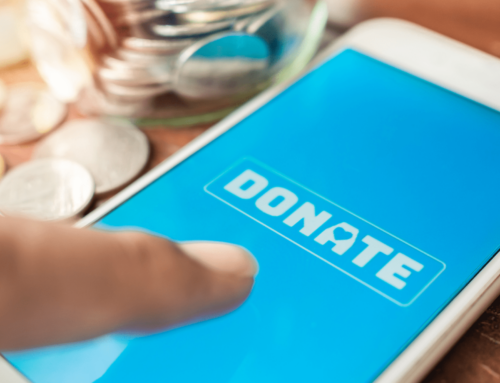Many nonprofits make the mistake of thinking that fundraising only applies to raising money, so they neglect contributions that are not cash.
In-kind donations include gifts of time, goods, expertise, and services. These kinds of contributions can help your nonprofit thrive, especially when economic times are tough, by lowering operating costs and providing needed materials and services to help meet your organization’s objectives.
Although there are multiple types of in-kind donations, nonprofits must make sure that the contributions align with the mission and overall goals of their organization. While determining what in-kind donations to accept and how to do so can seem daunting, the following tips can help your nonprofit benefit and grow from in-kind donations.
Defining In-Kind Donations for Your Nonprofit
In-kind donations encompass all gifts that are not cash. Tangible in-kind contributions are often easy to recognize, such as gifts of goods for silent auctions or specific items that directly relate to a nonprofit’s mission. However, non-tangible in-kind donations, such as free or discounted venue use or pro-bono rebranding by a marketing professional, can help save you money and should be considered as important as cash gifts. Consider the types of goods, services, expertise, or volunteering that your nonprofit can benefit from, and make a conscious effort to include these as part of your fundraising efforts and in your daily operating procedures.
Since in-kind contributions are often less visible and seemingly less important than cash donations, some nonprofits forget to thank these donors in the same way that they thank those who make monetary contributions. Thinking about in-kind contributions in terms of the value provided or money saved can help make the benefits of these gifts more evident to teammates, volunteers, and donors. In turn, this visibility helps ensure your nonprofit maximizes the benefits from these donations.
Defining the types of in-kind contributions that fit with the overall mission of your organization will also help you communicate what specific items, services, or expertise is needed to your community via your website and social media channels, in addition to word-of-mouth through volunteers and donors. Letting your community know what your organization needs to thrive is the first step in procuring it.
Valuating In-Kind Contributions
Generally Accepted Accounting Principles (GAAP), which apply to both nonprofit and for-profit organizations, dictate that nonprofits consider all revenue, including in-kind donations. After receiving an in-kind gift, record when and what you received in terms of “fair value.”
There are a few ways to determine the “fair value” of a good or service, including looking up the retail price, asking for quotes from companies, or using salary data to determine how much a service would cost if you had to pay for it outright. You should also ask donors to estimate the value of their donation and verify that this estimate is accurate.
When in doubt about in-kind contributions, contact a tax advisor. This qualified person can advise your organization about how to report in-kind donations.
Understanding the Benefits of In-Kind Donations
Besides providing your nonprofit with much-needed goods and services to achieve your mission, in-kind donations can help you leverage additional support for major projects and campaigns through other in-kind contributions and cash gifts. By seeking in-kind donations, you can decrease the amount you need to set aside for your budget or decrease your overall grant request, making it more viable to obtain in some cases.
In addition, companies may be more amenable to making in-kind contributions rather than giving money outright since in-kind donations are not as strictly tied to a budget as cash often is. Also, companies may have an easier time procuring the sign-off for in-kind contributions than of getting approval for financial contributions.
Developing In-Kind Donation Forms and Procedures
Certain forms and policies can help you keep track of in-kind donations and manage donor expectations to prevent misunderstandings or confusion regarding what kind of in-kind donations are useful for your nonprofit. Also, these documents and policies provide data for metrics about what in-kind contributions were made and how they were used.
Gift Acceptance Policy
A gift acceptance policy will help guide potential donors and direct volunteers and other members of your organization when either canvassing for or presented with offers for in-kind contributions. This document should include:
- What gifts are sought by and are appropriate for your nonprofit;
- Any minimums or maximums in terms of amount or value for donations;
- How your nonprofit evaluates contributions in general;
- An explanation of why certain gifts may be deemed unacceptable and what will be done with contributions that do not meet the gift acceptance policy; and
- A caveat that all or some gifts may be evaluated by a legal team before acceptance or require written documentation spelling out the scope and terms of the gift.
This policy can help your nonprofit determine how useful a gift will be for your mission and whether or not it will cause a drain of resources. Even if you do not accept an in-kind donation, make sure to communicate to the donor why you did not accept the gift while thanking them for their generosity. Be sure to publish this policy on your website so that everyone is on the same page when it comes to in-kind donations.
In-Kind Donation Form
In keeping with GAAP, remember to include the following information when recording in-kind contributions:
- A description of the in-kind donation;
- The fair market value of the gift and an explanation of how that valuation was determined;
- The date received; and
- The contact information of the donor.
Creating a form with this information can help your organization record in-kind contributions in a timely manner and serve as a reminder for thanking in-kind donors.
Gift Agreement Form
For larger in-kind donations, consider a gift agreement. In addition to the description, fair market value, date received, and donor contact information found on the in-kind donation form, this document should include the purpose of the gift according to the donor and how your nonprofit plans to use the gift accordingly. Doing so will help ensure your nonprofit and the donor agree on the scope of the contribution, minimizing conflict or misunderstanding.
Gift Acknowledgment Form
A gift acknowledgment form serves two purposes: it helps donors with their taxes when an in-kind gift is over 250 dollars, and it shows how your nonprofit is thankful for these gifts.
The IRS requires written acknowledgment of gifts over 250 dollars and must include the following for in-kind donations:
- Your organization’s name and recognition as a tax-exempt nonprofit under Section 501(c)(3);
- A description of the in-kind donation, but not the estimated value of this contribution; and
- A statement explaining whether or not the donor received goods or services from your nonprofit as recompense. For example, if a nonprofit gifts special-event tickets in return for a substantial donation, the organization needs to include the tickets’ estimated or market value.
Even if an in-kind donation does not meet the 250 dollar minimum that the IRS requires for reporting, consider thanking these donors for retention and rapport-building purposes. A prompt and heartfelt “thank you” can go a long way in maintaining strong donor relationships.
Communicating About In-Kind Donations
According to Double the Donation’s Nonprofit Fundraising Statistics for 2021, “nonprofits of all sizes routinely leave a lot of potential revenue on the table.” Key factors that lead many organizations to miss out on potential revenue are not understanding who is donating and what motivates them to give. For example, most Millennial and Gen-Z donors tend to give online based on social media posts, while Baby Boomers give online based on targeted emails.
Creating email campaigns that target Baby Boomers and reminding them of other donation opportunities besides giving cash may help your nonprofit gain a larger pool of donors who are willing to give something besides money. Similarly, an in-kind donation campaign via social media can inspire younger people to volunteer or donate specific items, especially if they feel they cannot contribute financially.
A key aspect in maximizing the benefit for in-kind contributions is thanking donors in a timely and genuine way. Providing details about how the gift will be used and how it aligns with the overall mission of your nonprofit creates transparency and can set the stage for future communications. Even if the in-kind donation is small, donors who feel appreciated and that they have contributed in a meaningful way to your nonprofit may consider giving more or making a monetary contribution down the line.
Neglecting in-kind donations may lead your nonprofit to miss out on opportunities to gain goods and services that benefit your overall mission or cut costs so you can focus on reaching your goals. Instead of passively accepting in-kind contributions, consider actively reaching out for in-kind donations and including this practice as an integral part of your fundraising strategy. In addition, be sure to thank donors for their in-kind contributions in the same way that you thank donors for their cash contributions.
Looking for more ways to bring in donors and donations? Maybe Google Ads could help. Eligible nonprofits could receive up to $10,000 in monthly ad credits to use on ads, and we can give you everything you need to know to apply.





